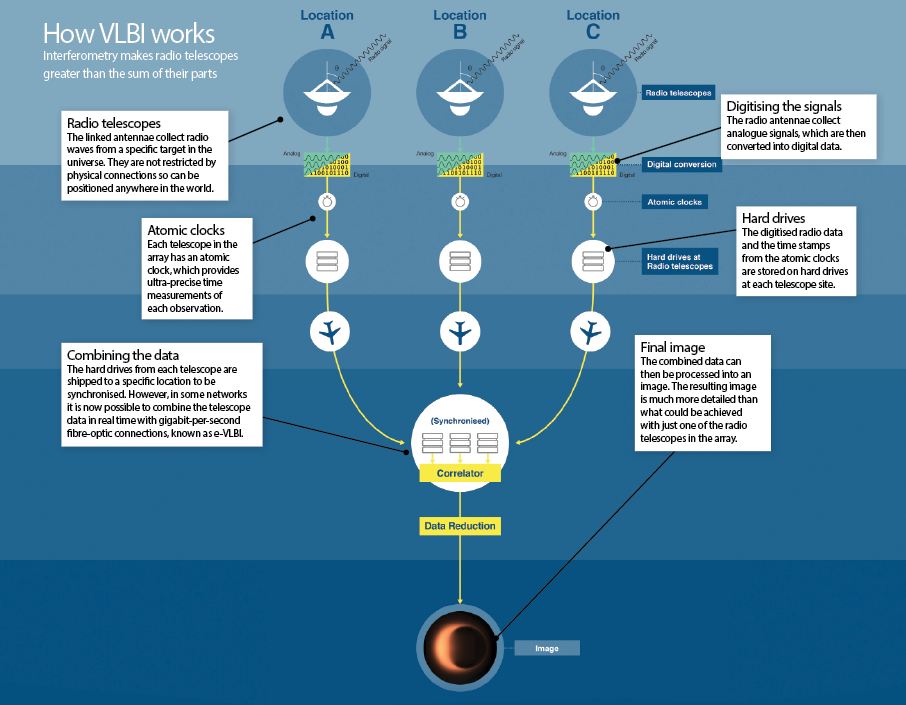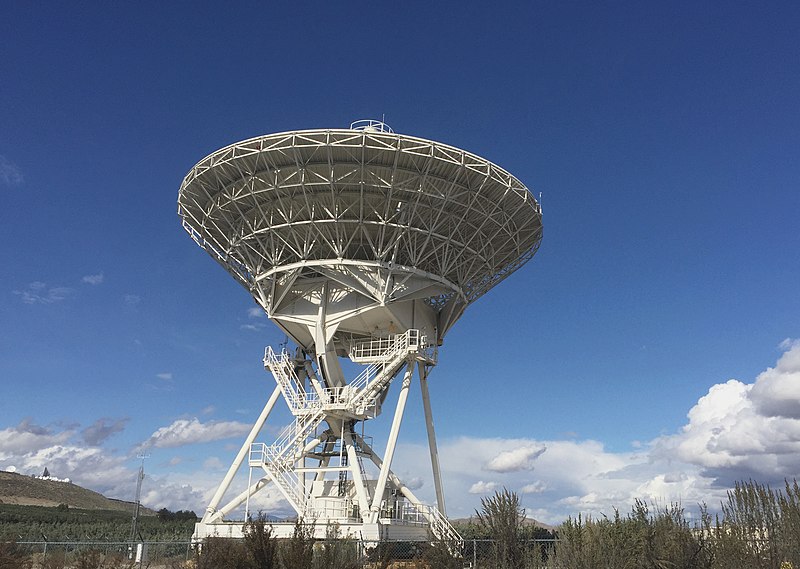What is interferometry?
How this clever technique can create a telescope over half the size of Earth
When it comes to telescopes, the bigger the better. A larger primary mirror or objective lens (in optical telescopes) or antenna (in radio telescopes) collects more light or radio waves, resulting in more detailed images. But building massive telescopes is incredibly expensive, and beyond a certain size it simply becomes impractical.
To be able to view the Moon in enough detail to spot the lunar landers, for example, you would need an optical telescope with a 60-metre-diameter mirror. To put this in context, the largest optical telescope on Earth – the Gran Telescopio Canarias – has a 10.4-metre mirror, and the orbiting Hubble telescope’s is only 2.4 metres wide.
A technique called interferometry can overcome this problem. If you can combine the light collected by two telescopes positioned 60 metres apart, you will see the same amount of detail as a single 60-metre-wide telescope. In optical interferometry the telescopes must be physically connected to combine the data, which can limit how far apart they can be placed. With radio interferometry, however, the signals can be combined remotely at a later date, so the telescopes themselves can be placed anywhere in the world.
Very long baseline interferometry (VLBI) uses networks of linked radio telescopes positioned very far apart – often across entire continents or hemispheres, or even in orbit – in order to view the universe in much greater detail. One of the largest VLBI systems is the Very Long Baseline Array (VLBA), which consists of ten radio telescopes in Hawaii, across the mainland US, and the Virgin Islands. This system can provide the same level of detail as a single telescope over 8,600 kilometres wide!

This article was originally published in How It Works issue 116
For more science and technology articles, pick up the latest copy of How It Works from all good retailers or from our website now. If you have a tablet or smartphone, you can also download the digital version onto your iOS or Android device. To make sure you never miss an issue of How It Works magazine, subscribe today!





